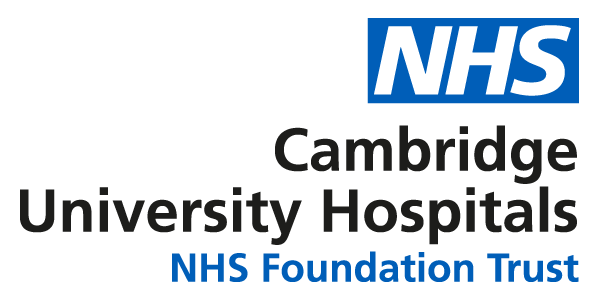On 3 July 2025, the Government published its 10 Year Health Plan for England, setting out ambitions for the NHS over the next 10 years.

The case for change
Many have described the NHS as being in a 'critical condition', with public satisfaction having fallen from 70% in 2010 to 21%.
Productivity within the NHS is down 20-25% post-COVID and many parts of it are financially unsustainable.
There are also the demographic challenges of an ageing population, with 25% of people in this country having a long-term condition, which accounts for 65% of NHS spending.
However, despite these challenges, the 10 Year Plan represents a transformational opportunity. With unparalleled access to population health data, a digital healthcare revolution driving genomics leadership and a new era of patient choice, there is much to be optimistic about.
There are three key ambitions set out in the 10 Year Plan:
- Shifting care from hospitals into the community
- Shifting from analogue to digital
- Shifting from treatment to prevention
Below we pull out some of the key parts of the 10 Year Plan, and explain what it means for the role of genomics moving forward.
You can read the full 10 Year Plan here (opens in a new tab), as well as an Executive Summary (opens in a new tab) and an Easy Read Version (opens in a new tab).
Three major shifts
Five ‘big bets’ set to accelerate health care reform through innovation
Following from the prioritisation of technology, the section on innovation in the plan also places five big bets on ‘the most direct and impactful technological levers for transforming NHS care delivery’. These are:
- data quality and interoperability for research and innovation
- AI tools
- genomics and predictive analytics
- wearables
- robotics
The role of genomics
With over 100 mentions of genomics within the new 10 Year Plan for the NHS, it is clear that genomic medicine, along with the other four 'big bets', will play a central role in the transformation of the NHS over the next decade. There are exciting possibilities here that could bring real benefits to people, particularly the signalling of a shift in how genomics is used, from something at the very specialist end of treating cancers and rare diseases, to ambitions for it to be used ‘in routine preventive care’ and to ‘mainstream genomics population health’.
Here are some examples of how genomics will play a key role:
Genomics population health service
- The NHS Genomics Medicine Service will expand the population health testing it already provides and will shorten testing times further. Continuing expansion of the NHS’ whole genome sequencing programme, with a focus on risks relating to common disease areas including cardiovascular, renal and diabetes .
Polygenic risk scores (PRS)
- Population based PRS alongside other emerging diagnostic tools will enable early identification and intervention for individuals at high risk of developing common diseases. A 2021 NHS trial showed that adding PRS to standard clinical workflows in CVD worked well.
- Multi-disease PRS technology is already being used for up to 5 million participants via the Our Future Health (opens in a new tab) programme. By embedding genomic insight into digital pathways, the NHS can triage risk earlier, target screening and guide prescribing based on personalised profiles.
- Expansion of genomic testing for inherited causes of major diseases to allow earlier detection and intervention, including cancer (e.g. BRCA1/2 genes), and cardiovascular disease predisposition (e.g. familial hypocholesteraemia). Integratiion of genomic insights into cardiovascular disease prevention and care through a trial with Our Future Health implementing Integrated Risk Scores (which bring together genomics and other non-biological risk factors) in neighbourhood health services, expanding to all 5 million participants in the Our Future Health programme. Subject to evaluation, this will be rolled out to other conditions like diabetes, breast, bowel and prostate cancer, and dementia.
Universal newborn genomic testing and whole genome sequencing
- Building on the Genomics England-led Generation Study (opens in a new tab) which is currently recruiting up to 100,000 newborn babies and screening them for over 200 genetic conditions.
- The document also sets out plans for a new large-scale study to sequence the genomes of 150,000 adults.
Pharmacogenomics
- Pharmacogenomics is the study of how genes affect a person’s response to drugs. This field combines pharmacology (the science of drugs) and genomics (the study of genes and their functions) to develop effective, safe medications that can be prescribed based on a person’s genetic makeup. One example of it's application in the NHS is the My Medicines tool which will guide patients on drug interactions to help avoid adverse drug reactions (estimated to cost NHS ~£2.2 billion per year).
- Integration of genomic testing for pharmacogenomic profiles into the NHS over-40s Health Check with monitoring of uptake across different communities. Also the use of pharmacogenomic insights in mental health prescribing will be a priority.
Neighbourhood Health Service
- Support prevention of disease through the use of technology and genomic insights. By 2035 the ambition is to incorporate genomic data, digital tools and technology and a single patient record supplemented by advances in genomic data, to enable personalised predictive care.
- Training of new Genomics Champions in the neighbourhood, in conjunction with the NHS Genomic Medicine Service, will aim to increase the uptake of genomic testing and adjust neighbourhood skill mixes to reflect genomic data.

